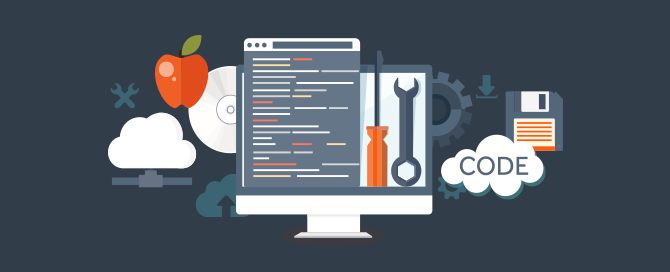Open source technology is our bread and butter for a lot of reasons that, in the tech space, are so obvious that they don’t need explaining. But when businesses approach us, the benefits of using open source technology aren’t always so clear. On a regular basis we get hit with the simple but very smart question: Why is open source the right choice for us?
The answer we give businesses starts with a definition. Open source technology is essentially software with an open license source code – anyone can study, change and distribute the software for any purpose. And because coders are free to play with and update that software, innovation happens naturally and often
Why open source collaboration leads to innovation
Remember the dictionaries and encyclopedias you turned to as a kid? The ones that had to be updated and replaced every couple of years as new words or world events happened? Consider how valuable the information in those old reference books would be today. The quick conclusion is not very.
Now think about Wikipedia. Instead of a handful of editors, it has millions of registered editors. Unlike books which take time to edit, reset, and reprint, Wikipedia can be updated in real time. It is a community-powered, living document that is continuously getting better and more accurate.
Innovation in the open source community happens in much the same way. Updates to existing software are fueled by collaboration among a large group of specialists and enthusiasts that are well-connected, often thanks to social media. The end result is technology that changes (for the better) rapidly and a community of support for that technology that can include thousands or even millions of people.
The advantages of open source technology for your business
Here are six ways open source solutions benefit businesses directly.
- Affordability: While open source code often entails costs associated with deploying, supporting and maintaining the software, open source licenses are free – leaving businesses with more capital to engage qualified developers who can do this implementation work.
- Flexibility: Kiss contracts and software licenses goodbye (for the most part). When using open source applications, businesses have the freedom to pick and choose what solutions are best for them, without needing to lock into contracts. They can then customize based on their unique needs.
- Sustainability: Unlike that dusty dictionary, most open source software is updated on a regularly basis by the community that supports it. This gives businesses the ability to enhance their own products versus replacing them and ultimately falling behind.
- Security: Although vulnerabilities in open source code are exposed to everyone, including hackers, there are strong arguments that show how an open source model can provide a higher level of security than proprietary software. Whereas proprietary software is maintained by a small team at a single company, open source projects are often actively implemented and maintained by a large community of specialists who can find (and address) security vulnerabilities much more readily.
- Reliability: Because open source technology is fed by thousands of experts without the overhead costs that other solutions have weighing on them, the solutions implemented are often more reliable. And when something does go wrong, that same community of specialists are on deck to identify and help your developers troubleshoot, very quickly.
- Speed: Time is money, especially in the world of development. Open source products and the communities behind them provide developers and businesses with the opportunity to move quickly.
It’s critical to note that some open source projects are poorly written and can contain security vulnerabilities and other problems. Eventually many of these projects get abandoned after a few years, which can leave you stuck with code that is unmaintained.
Keeping this in mind – despite the advantages of open source, it’s important to understand the importance of selecting open source technologies that have strong developer communities and hold promise for years to come. At SiteRocket Labs, we are extremely selective about what open source packages we work with on behalf of our clients because at the end of the day, it needs to be the best fit for your business.
